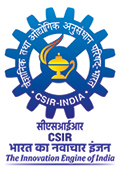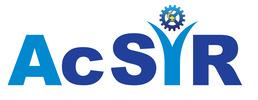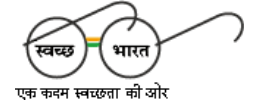Structural Integrity Evaluation Programme at NML
Preamble
The advancement in science and technology have pushed the engineering materials to their limits and expect the materials to perform under more severe conditions. The consequences, in case the materials fail to perform, can therefore be more serious, with far greater economic and human penalty. Increasing material and operating costs also demand that materials be used efficiently, to the fullest extend up to which they can provide service. Normally, an industrial component is designed to last for a period of 20-25 years. In the Indian scenario, components in a majority of industries have already completed this designated life or in the verge of retirement. To maintain the industrial production either new plants have to be set up or the existing units have to refurbished with an extended life. The first option may not be viable, as it is not only expensive but also requires a long gestation period prior to the start of production. Experience has shown that many of the ageing components can be used beyond their design life without any compromise on safety and reliability, provided, their condition is periodically assessed and correct decisions are taken on repair and/or rerun.
This, however, requires an in-depth understanding of the life limiting factors of ageing components and their influence on the material characteristics. These factors are expected to be different for different components/service conditions. Influence of these factors, either individually or synergistically, on material performance can be evaluated at the laboratory. Often, it is also required to develope appropriate non-destructive evaluation (NDE) methodologies to assess the material characteristics, as NDE tools can be effectively used for on-line condition monitoring and early damage prediction. It is also required to develope predictive methodologies and software platforms so that a reliable life estimation of ageing components can be evaluated based on the laboratory understanding. The life evaluations thus obtained can then be validated on a selective full size components. These are some of the essential elements required for damage assessment and life evaluation of ageing components, and an important facet for structural integrity evaluation.
CSIR-NML has been carrying out structural integrity activity for more than three decades, and in fact launched a number of mega programmes with direct partnership with various Indian industries. Through these programmes, CSIR-NML has been helping Indian industries to resolve specific or generic issues with respect to components or materials, developed tools and devices for on-line condition health monitoring, developed software platforms/packages for damage prediction. Apart from these CSIR-NML believes that knowledge dissemination and skill development of shop floor engineers is an important aspect for an effective implementation of structural integrity strategy. CSIR-NML regularly conducts several generic and tailor made training programmes, workshops and seminars for the benefit of industries. A concise information on structural integrity activities of CSIR-NML has been provided in this document.
Structural Integrity at CSIR-NML
Structural integrity is a trans-disciplinary subject with multiple dimensions and facets. For example, the issue can be viewed in terms of materials, design or repair & maintenance (R&M), and CSIR-NML is specialised in addressing the material related issues of structural integrity. CSIR-NML has the expertise, experience and capability to characterise the material, evaluate damage due to various factors (from high temperature deformation ‑ fatigue ‑ corrosion) or even to propose and develope a better alternate material for the intended application. It has capability to simulate, model and predict material performance, assess the damage through advanced NDE methods. Over and above, CSIR-NL has been carrying out numerous failure and accident investigations from diverged industrial sectors, a unique yet essential experience required to understand the factors leading to the failure of materials ‑ an important aspect of structural integrity. This, obviously, require a team with a multi-disciplinary specialisation and CSIR-NML has a close-knitted team (Fig.1) that work in a complimentary approach.

Fig.1: Domain expertise available at CSIR-NML for structural integrity evaluation.
CSIR-NML has all essential facilities to carry out investigations on materials. It has one of the largest creep testing facility in south Asia, a single largest fatigue & fracture test facility, a host of characterisation tools, aqueous and high temperature corrosion evaluation set-ups, simulation instruments and packages. CSIR-NML also set-up tailor made special test set-up that deemed required to carry our any specific evaluation. For example, CSIR-NML is setting-up a special corrosion loop system to monitor the corrosion behaviour of oil & natural gas components under specific controlled environment.
The philosophy of structural integrity approach being followed at NML is shown in Fig.2. In brief, it involves generation of all necessary microstructural information of the material, evaluation of required mechanical properties and damage parameters, simultaneously get/generate material damage parameters from NDE tools, employ material models and apply all these information in the form of codes and software for life prediction. For validation of model using full scale evaluation, CSIR-NML often takes the help of the sister laboratories such as CSIR-SERC or CSIR-NAL.

Fig.2: Philosophy of structural integrity followed at CSIR-NML
Major programmes initiated by CSIR-NML on structural integrity is shown in Fig.3. Though CSIR-NML was carrying out investigations related the damage evaluation/failure investigations of industrial components right from its inception, a formal programme on structural integrity, namely, Component Integrity Evaluation Programme (CIEP) was started in the year 1994. Realising the importance of NDE in such programmes and the need to often research and develope specific NDE tools, a national NDE facility was created in the year 2000. From the experience gained from CIEP, two more mega structural integrity programmes were launched, namely, Technology for Engineering Critical Assessment (TECA) in the year 2004 and Technology for Assessment and Refurbishment of Engineering Materials and Components (TAREMaC) in 2008.

Fig.3: Major structural integrity initiatives by CSIR-NML
Component Integrity Evaluation Programme (CIEP)
This was the first cooperative research venture in structural integrity started at CSIR-NML in the year 1994. Involvement of both public and private sector industries right from the beginning is the uniqueness of this programme. Each of these partnering organisation contributed a fixed premium and a partial funding was obtained on loan from the World Bank to be paid back over a period of 20 years.




It has even developed and successfully applied reclamation techniques on already damaged materials.
The first major programme on Component Integrity was launched by CSIR-NML in 1988 with a partnership with industrial sectors namely, power, petrochemical, steel, atomic energy and railways. From the experience gained from this co-operative program, CSIR-NML initiated an activity on Technology for Engineering Critical Assessment under the 10th five year plan of CSIR. Focused on selected industrial sectors, this program went beyond CSIR-NML boundaries and activities were networked with other CSIR and non-CSIR organisations with direct participation of user industries. The purpose of the above two programmes was to bridge the incomplete and inadequate knowledge of the behaviour of engineering materials and the process through which damage is accumulated in them while in service, and our inability in accurately assessing the damage incorporated in them in a quantitative manner. This, however, may not be sufficient for a comprehensive integrity management, unless this knowledge is assimilated into technologies that in turn can be used for refurbishing material/component so as to equip them with better properties and enhanced resistance to damage incorporation. To achieve this goal, CSIR-NML taken up yet another activity to develope Technology for Assessment and Refurbishment of Engineering Materials and Components under the 11th five year plan.
The strategy employed in all these porgrammes were (i) design and develop newer materials that can survive the enhanced challenge, or superficially augment existing materials in service in order to improve their performance, (2) monitor the behaviour of engineering materials while they are in service so that, at any point of time, their performance can be quantified and actions initiated to mitigate anticipated failures, (3) at the end of design lives, ascertain the extent to which materials have been degraded, and extend their usage if it is found that they are still capable of providing service. The necessary knowledge, know-how, techniques, tools and devices to address the issues were developed and shared with the industrial partners.
Objective of the Programme
The main objective of this activity is to develope knowledge, techniques, tools and devices for an enhanced structural integrity evaluation and health monitoring of components in the following industrial sectors. Investigating major failure events and accidents were also considered as one the main objectives of this activity.
Major industrial sectors covered under this activity are
- Nuclear Power
- Thermal Power
- Oil and Petrochemical
- Steel Manufacturers
- Indian Railways
- Indian Air Force
A mapping of services provided to different industrial sectors is given in the table below.

Significant Achievements
Life extension methodologies
- The life of aging high temperature components approaching the end of design life can be extended by thorough creep damage assessment and life extension methods by harnessing the left over life.
- Life extension programmes for a variety of high temperature components (boiler, header, super heater, reactor vessel) have been provided to thermal power, refinery, fertilizer sectors
- Largest creep facility in south Asia, established to serve Indian steel manufactures for high temperature application.

Material damage evaluation
- Damage accumulation due to various mechanisms and operating conditions has been made for a wide range of components in thermal, nuclear, oil & petrochemical , steel, railways and Indian air force.
- Data generated are used for design, understanding failure, material selection etc.
Device development
- Special device for evaluating mechanical properties of components at site have been developed and supplied to Atomic Energy, BHEL and Indian Oil Corporation.

Portable Automated Ball Indentation (PABI) System Developed by CSIR-NML
- Non-linear ultrasonic based device for damage detection

Non-linear ultrasonic device developed by CSIR-NML
Sensors and Sensor Devices
- A number of sensors and sensor devices were developed for damage detection in components. Some of them are...
- Fibre Bragg Grating (FBG) sensor based system for online temperature monitoring of mould of billet caster
- FlawGuard ‑ an eddy current based sensor for flaw detection
- MagSys-II ‑ a Giant Magnetoimpedance based sensing device for damage detection
- MagStar ‑ a portable electromagnetic sensing device for damage evaluation


Refurbish Methods
- Methodologies were developed, demonstrated and applied to rejuvenate the life of aero and gas turbine engine blades after substantial service period.
- Below is list of agencies and details where rejuvenation strategies were employed
| FBG Sensor installed in plant | Flaw Guard | ||
|---|---|---|---|
| MagStar | MagSys-II | ||
| Material | Component | Agency | Remarks |
| Cast nickel base superalloy IN 738 LC | 1st Stage Turbine Blade | NTPC R & D, NOIDA | Life extended to 25,000 hours through rejuvenation |
| Forged nickel base superalloy Udimet-520 | 1st row gas turbine blade | Auraiya Gas Power Station, NTPC | Demonstrated rejuvenation protocol |
| Cast nickel base superalloy GTD-111 | 1st Stage Bucket of gas turbine | Rajiv Gandhi Combined Cycle Power Plant, NTPC, Kayamkulam | Developed rejuvenation protocol |
| Cast nickel base superalloys BZL-12Y, AP-220 | High Pressure and Low Pressure Turbine Rotor Blades of R-29 Aeroengine (MIG) | IAF | Demonstrated remaining life |
Failure and Accident Analysis
- Carried out a number of failure case studies for all the industrial sectors menioned above, including Indian Air Force.
- A number of accident investigations that are of national concern were made. Notable among them are (i) Khanna rail accident (1998) in which 200 persons were killed (ii) Saraibanjara rail accident (2000) in which 44 passengers have lost their life, (iii) derailment of Sealdah-Ajmer Exp near Kanpur and (iv) derailment of Indore-Patna Express
- Failures of a number of components in Indian Air Force fleet have also been investigated.
 Rail piece from Khanna rail accident (1998) Rail piece from Khanna rail accident (1998) |
 Rail pieces from Saraibanjara rail accident (2000) |
 |
 |
 |
 |
 |
 |
 |
Failure of various parts of aero-engine carried out for Indian Air Force
Outcomes
- Life extension methodologies and protocols
- Devices for on-site property evaluation
- Sensors for various damage detection
- Failure investigation reports
Name of Stakeholders/Industrial Partners
- Atomic Energy Units (BARC, IGCAR, NPCIL)
- Thermal Power Plants (NTPC, State Govt Agencies, National Power Grid, BHEL)
- Oil & Petrochemical (IOCL, BPCL, OIL, ONGC, MRPL, Reliance)
- Indian Railways
- IAF, HAL, NHPC
Economic and Social Impact
- Activities on life extension methodologies, damage evaluation and sensor materials are aimed to provide a seamless operation of partnering industries. Implementation of the recommended strategies therefore assisted in planning the inspection schedules, extend the operating life of components and plan the shut down schedule for inspection.
- Low cost in-line devices replaced the expensive tools often hired for inspection purposes.
- Activities also assisted the strategic sectors in material selection, design.
- Failure/accident analysis helped in the stakeholders in resolving issues of national concern, avert the repetitions.






